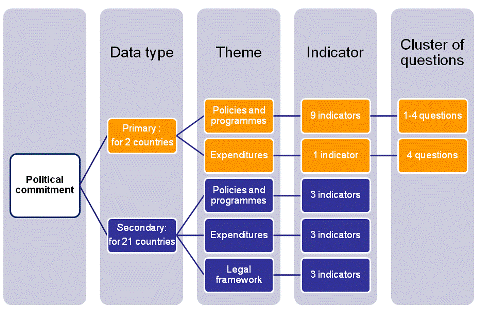Why a commitment index is needed
In 2009, for the first time in history there were over 1 billion hungry people in the world. The evidence shows that there is a huge gap between the promises made in international and national declarations and the action taken to turn these promises into reality.
One of the reasons for this lack of action is that there is little public pressure on governments to address hunger-related problems. Behind this is the very limited public knowledge about the scale of the problem and what governments are – and are not – doing to tackle it.
The HRCI aims to make the extent of political commitment to hunger reduction, among both developing and developed countries, more transparent to all. Our hope is that this will enable:
- civil society to exert greater pressure on governments and international policy makers to take action
- governments to evaluate their own efforts and to prioritize appropriate action
- communities to have a voice, to form new alliances and to be empowered
If we can achieve these goals we believe we can make a real contribution to increasing and intensifying action to reduce hunger and malnutrition.
How HRCI adds value to existing advocacy campaigns and accountability mechanisms
Existing hunger indices compare countries’ performance based on hunger and malnutrition outcomes, for example the Global Hunger Index, or on a combination of outcomes and commitment such as the ActionAid Hunger Free Scorecard.
Global Hunger Index: Countries are assessed based on three indicators: the proportion of people who are undernourished, the proportion of children under five who are underweight, and the child mortality rate.
ActionAid Hunger Free Scorecard: Developing countries are graded on four indicators: their legal commitment to the right to food, their investment in agriculture and social protection, and their performance on hunger and child nutrition. Developed countries are ranked on their aid to agriculture and social protection; and their commitment to sustainable agriculture and tackling climate change.
The Hunger Reduction Commitment Index, as the name suggests, is an attempt to assess political commitment, but also to relate this to critical contextual factors such as:
- The extent of the hunger and malnutrition problem within a country.
- That country’s ability to act on the problem – both in terms of its wealth and administrative capacity.
- Public accountability and voice – the potential for civil society to bring hunger onto political agendas.
How the index is constructed
Unlike other hunger indices the HRCI uses indicators derived from a combination of primary data, collected from a perception survey of country experts and secondary data drawn from a variety of publicly available sources. The perceptions surveys, piloted in Bangladesh and Zambia, gathered data from government, civil society, academics, the donor community and others. These indicators are then grouped under three themes: Policies and programmes, Government expenditures and Legal frameworks.

You can investigate how the index is constructed and find technical notes and details on the methodology via the data page and background documents on the HRCI website.
